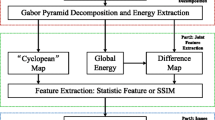The article addresses the issues of improving the accuracy and reliability in identifying stereo images via a priori estimation of the specific identification error arising from the asymmetry of reference image intensity near the analyzed point (within the identification “window”). The mechanism underlying this error is examined, and a method for its prediction is developed. The work methodology includes a geometric analysis, an analytical description of the imaging process, and computer simulation. A variant of stereoscopic television system geometry is considered, i.e., with identical cameras whose optical axes are parallel to each other and orthogonal to the stereoscopic base. Here, the position of the reference relief plane serves as a priori information for finding a solution. A procedure is developed for determining the intensity center, which is used in the identification error prediction method. Using computer simulation, the author demonstrates the effect produced by the intensity center asymmetry relative to the “window” center on the identification error and the possibility of predicting it. The developed method can be used to decide whether to perform a search procedure for the second stereo image or to reject the analyzed point in case of an unacceptably large predicted identification error, as well as to limit the search interval for the second image and adjust the “window” size if necessary.




Similar content being viewed by others
References
T. Lumann, S. Robson, S. Kajl, and Ja. Bom, Close-Range Photogrammetry and 3D Imaging, LENAND Publ., Moscow (2018).
M. N. Favorskaya and I. V. Tupitsyn, Hierarchical Method of Search of Corresponding Points at Stereo Images, Vestn. Sib. Gos. Ajerokosmich. Univ. im. Akad. M. F. Reshetnjova, 41, No. 1, 62–67 (2012).
D. N. Stepanov, Techniques of Feature Points Matching in the problem of UAV’s Visual Navigation, Bull. South Ural State Univ. Ser.: Comput. Math. Softw. Eng., 4, No. 4, 32–47 (2015), https://doi.org/10.14529/cmse150402.
E. V. Goshin and V. A. Fursov, Conformed Identification in Corresponding Points Detection Problem, Comput. Opt., 36, No. 1, 131–135 (2012), https://www.elibrary.ru/owifnr.
V. P. Orlov and E. N. Sharikov, Algorithm of Finding and Classifying Special Points of Object on the Basis of Harris’s Detector, Nanoindustry, No. S(74), 171–178 (2017).
V. V. Antipin and A. G. Bujmov, Statisticheskij Analiz Oshibok Sovmeshhenija Izobrazhenij po Metodu Naimen’shih Kvadratov v Uslovijah Okrashennogo Shuma, Avtometrija, Optoelectron. Instrum. Data Process., No. 3, 27–31 (1985).
I. V. Egorov and P. M. Juhno, Vlijanie Odnorodnogo Korrelirovannogo Jarkostnogo Shuma na Kovariacionnuju Matricu Oshibok Sovmeshhenija Izobrazhenij, Avtometrija, Optoelectron. Instrum. Data Process., No. 1, 105–107 (1988).
V. A. Grishin, Otsenka Tochnosti Ustanovlenija Sootvetstvija v Sistemakh Tekhnicheskogo Zrenija, Tsifrovaja Obrabotka Signalov, No. 4, 2–6 (2008).
R. M. Hrushh, A. N. Grin’, and A. V. Solov’ev, Otbrakovka Tochek pri Opredelenii Jelementov Vzaimnogo Orientirovanija Snimkov Stereopary, Informat. Space, No. 1, 80–84 (2016).
S. P. Buslaev, Development of Onboard System of Autonomous Machine Vision of Marsokhod, Vestn. NPO im. S. A. Lavochkina, 17, No. 1, 24–28 (2013).
M. V. Samoilenko, Reconstruction of the Point Spatial Coordinates in the Case of Normal Stereo Photography, Autom. Contr. Proc., 55, No. 1, 92–98 (2019).
Author information
Authors and Affiliations
Corresponding author
Additional information
Translated from Izmeritel’naya Tekhnika, No. 5, pp. 22–28, May, 2023. https://doi.org/10.32446/0368-1025it.2023-5-22-28.
Rights and permissions
Springer Nature or its licensor (e.g. a society or other partner) holds exclusive rights to this article under a publishing agreement with the author(s) or other rightsholder(s); author self-archiving of the accepted manuscript version of this article is solely governed by the terms of such publishing agreement and applicable law.
About this article
Cite this article
Samoilenko, M.V. Effect of Intensity Asymmetry on Stereo Image Identification Error. Meas Tech 66, 311–319 (2023). https://doi.org/10.1007/s11018-023-02229-2
Received:
Accepted:
Published:
Issue Date:
DOI: https://doi.org/10.1007/s11018-023-02229-2




